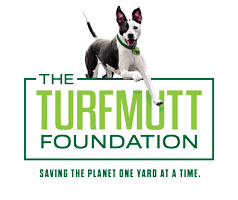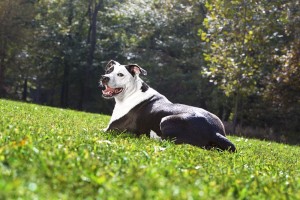Latest Posts
- Have a purpose when backyardingAugust 5 2021
- Study: Time outside alters our microbiomeAugust 4 2021
- Happy National Mutt Day from Mo-MoJuly 27 2021
- New home? Avoid these common mistakes in your yard.July 26 2021
- Infographic: Plan a backyard staycation this summerJuly 22 2021
Categories
Archive
April 18th
10 ways the world is better if we act like TurfMutt
The TurfMutt environmental education and stewardship program is celebrating its 10th anniversary this year. Lucky the TurfMutt, a real-life rescue dog who is “pawing it forward,” has inspired thousands of children and families to care of their living landscapes, yards and community green spaces—and to get outside and enjoy it. Because who loves a back yard or a jog through the park more than a dog?
TurfMutt says everyone can be an environmental superhero and make the world better for all of us, starting right in our own backyard. Act like TurfMutt, and get these 10 amazing benefits.
Enhanced well-being. Getting outside to connect with nature gets us back in touch with the natural world, something we need for a healthy, balanced life. Remember, nature starts at your backdoor, too! Eating outside, doing exercise, and even just playing, reading or lounging in nature, are good activities for our well-being.
A balanced man-made environment. We don’t live in a wild environment. Our cities, towns and suburbs are man-made. Green space helps offset the miles of concrete, buildings and roadways in our general landscape, and, they make our communities nicer and healthier places to live.
Sharper minds. There is a new trend toward “walking meetings,” where people have business discussion while taking a walk, for good reason. We work better outside. Studies show that tasks conducted under the calming influence of nature are performed better and with greater accuracy, yielding a higher quality result. Spending time in gardens, for instance, can improve memory performance and attention span by 20%.
Greater physical health. People who garden for at least 30 minutes a week have lower body mass indexes (BMIs) – a measure of body fat – as well as higher levels of self-esteem and better moods overall. They also report lower levels of tension and stress.
Less stress. Children’s stress levels fall within minutes of seeing green spaces. Children gain attention and working memory benefits when they are exposed to greenery. And researchers found that Barcelona school children who had more exposure to the outdoors performed better on cognitive testing. Greening of vacant urban areas in Philadelphia reduced feelings of depression by 41.5% and reduced poor mental health by 62.8% for those living near the vacant lots.
Active and healthy children. Outdoor play increases fitness levels and builds active, healthy bodies, an important strategy in helping the 1 in 5 American kids who are obese get fit.
Better parent-child connections. Natural environments have been shown to improve parent-child communication, resulting in more responsive and connected communication compared to an indoor setting.
Critical wildlife support. Grass, trees and shrubs and other plant life provide food and habitat for birds, insects, and small mammals and provide wildlife corridors for migrating birds and other animals.
Longer life. People who have access to green spaces live longer, according to Harvard University researchers. According to Canadian researchers, living in a greener neighborhood could lower the risk of early death.
Knowing you’ve done the right thing. It’s hard to argue that nature isn’t important to families, communities and wildlife. Taking care of our living landscapes is the right thing to do—for everyone.
For more information, go to www.SaveLivingLandscapes.com.






